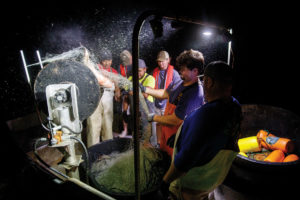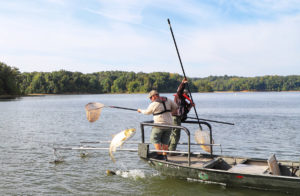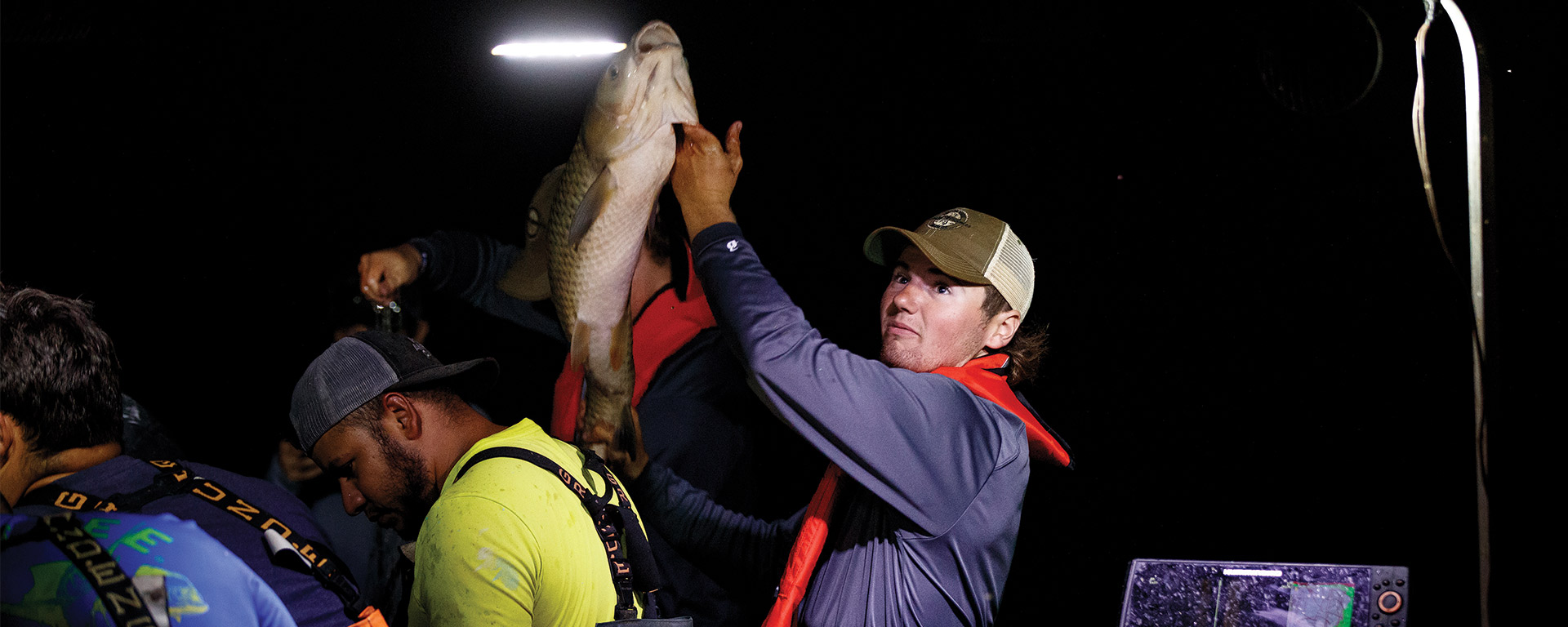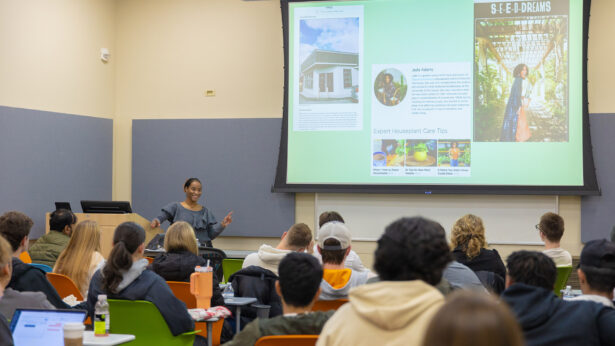One late afternoon last summer, UT Martin students Nathan Rorie and Austin Morphis accompanied a crew of commercial fisherman as they set out on Kentucky Lake in Northwest Tennessee to look for unwelcome visitors.
These visitors, Asian carp, have moved farther upstream in Tennessee and Kentucky during the last few years, and the students’ evening journey was part of the effort to learn more about the fish and the threat their relentless advance poses to aquatic life in Tennessee rivers and lakes.
Eric Pelren, UT Martin professor of wildlife biology, helps students such as Rorie and Morphis obtain summer internships with the Tennessee Wildlife Resources Agency. Each summer, the interns venture onto Kentucky Lake and Lake Barkley to study the problems caused by Asian carp, considered an invasive species. They also get the experience working with commercial fishing crews to harvest the thousands of pounds of fish that can be found below the surface on any given night.

“Asian carp are not native to North America but were brought here to control aquatic vegetation,” Pelren says. “It was hoped that they would not breed, and steps were taken to try to keep that from happening, but several carp did spawn, and since they have no native predators here, they proliferated.”
Just by their sheer numbers, Pelren says, the fish use resources and take up space, outcompeting many native species of fish and other aquatic wildlife.
What to do about that problem, Pelren says, is the million-dollar question.
“We face the same question with many other kinds of invasive species, such as wild pigs,” he says. “With any invasive species, it’s a matter of either completely eliminating them, which is extraordinarily difficult, or just from here on out trying to keep their numbers as low as we possibly can. And that means unrelenting efforts to lower their populations.”
Morphis, a sophomore in natural resources management, says he got a first-hand look at just how numerous are the fish that can grow up to 60 pounds and jump 5 feet out of the water when startled by outboard motors.
“That night, when we were with the commercial fishermen, in four hours we caught over 5,000 pounds of Asian carp,” he says. “It was nuts. You have no idea there’s that many in the water. It broadens your perspective a little bit when the fish are just jumping in the boat.”

Monte Belew, UT Martin’s director of safety, also is involved in the invasive species issue through his appointments to the Tennessee Fish and Wildlife Commission and to the Asian Carp Advisory Commission established by Gov. Bill Lee.
“Growing up on the Tennessee River in Henry County, I would never have thought that we would have an invasive species come in and just basically take over,” says Belew. “I definitely never thought that there would be any danger in skiing on Kentucky Lake because a fish might jump up and hit me in the face, so I was honored to be able to join the two commissions and help look for some solutions.”
One big factor working in Tennessee’s favor, Belew says, is that there does not seem to be an extensive amount of reproduction of the fish in Tennessee waterways. “For the most part, Asian carp are not able to reproduce locally because of water temperature and the slower current speeds in the Tennessee River, compared to the Mississippi River,” he says. “However, we are seeing large numbers of fish move up into our waters from the Mississippi and Ohio rivers.”
Determining how much spawning is taking place in Tennessee waterways is a big part of the students’ tasks each summer during their TWRA internships, Pelren says.
“They take boats out at night on the reservoirs and use nets and traps, which requires a great deal of experience and competence,” Pelren says. “The students have done very well, and we’re proud of their work with the TWRA.”

Rorie, a senior in natural resources management, said that on most nights he and Morphis would navigate their boat up and down the water, extending nets to look for any clumps of Asian carp eggs floating near the surface. They also would stop by inlets and drop off traps to catch any juvenile fish that may have recently hatched. At the end of the night, they would collect everything and prep what they caught for later study in the laboratory. Rorie said that, while they stayed focused on their work, it was easy to enjoy being out on the water.
“It was a little bit chilly at night, which was a surprise,” he says. “The year before it was warmer, so I found myself bundling up a bit. It was pretty quiet and peaceful, though.”
Long-term management of the Asian carp problem, Belew says, requires decreasing the numbers of fish coming into Tennessee waters and increasing the number of fish that are removed.
“Asian carp travel into our waterways through dams and locks because the locks open numerous times each day to facilitate marine navigation,” Belew says. “A lot of things have been done elsewhere to slow that down, such as using netting and flashing lights.” Those techniques are perhaps 75 percent effective in keeping out adult fish but not the smaller ones, he adds.
In the meantime, Belew said, the TWRA and other federal partners are subsidizing the market for Asian carp. This financial support ensures that commercial fishing operations have a viable path to selling the fish, and buyers have steady access to the product.
“Asian carp are being processed and shipped to the East Coast, where they are used as bait for crabs and Maine lobster,” Belew says. “Once they start buying the fish, the customers want to be able to rely on a stable supply.”

Crustaceans aren’t the carp’s only consumers, Pelren says.
“The fish is perfectly viable as a human food source and has been eaten in many Asian countries for millennia,” he says. “It’s currently too expensive to ship the fish on ice to Asian markets, but our local industries are learning to filet the fish and prepare it for serving in restaurants and at home.”
So is Asian carp good to eat?
“I’ve had it numerous times, and it’s delicious,” Belew says. “You have to work around the bones, but it’s a good-tasting fish, and I think the demand for it will only grow in the future.”



